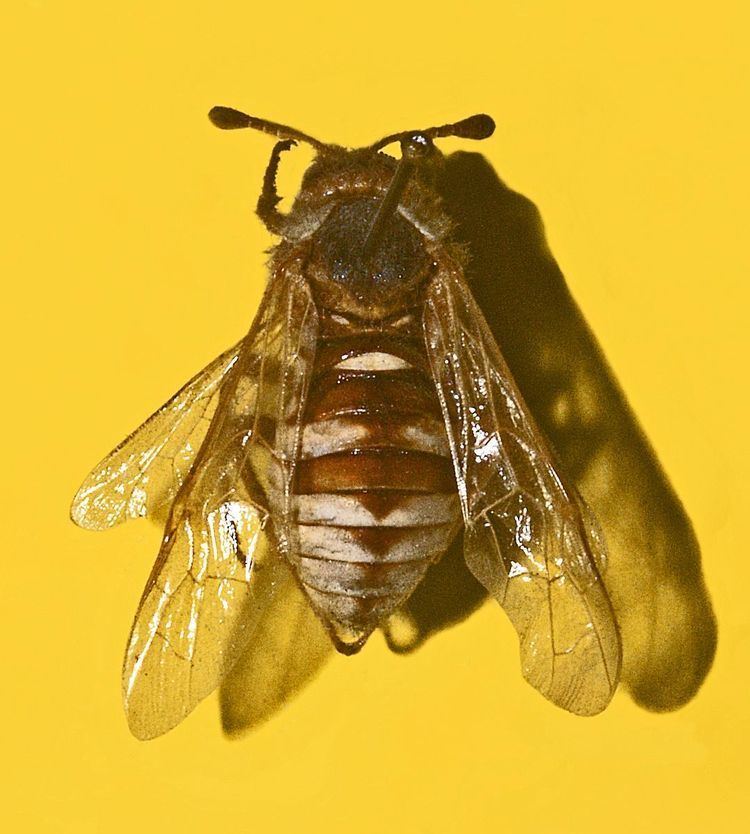Kingdom Animalia Suborder Symphyta Family Cimbicidae Rank Species | Class Insecta Superfamily Tenthredinoidea Phylum Arthropoda Order Hymenopterans | |
 | ||
Genus Palaeocimbex
Semenov, 1935 Similar Hymenopterans, Cimbex, Cimbicidae, Cimbex connatus, Abia sericea | ||
Palaeocimbex quadrimaculatus is a species of sawflies in the family Cimbicidae , the only species in the genus Palaeocimbex.
Contents
Description
Palaeocimbex quadrimaculatus can reach a length of about 25 millimetres (0.98 in). It is the thickest species of Cimbicidae in Europe. This species imitates the warning signals of Vespa crabro to deceive potential predators (batesian mimicry). The head is large. Wings are smoky brown. The thorax is dark brown. The abdomen is yellowish, with two large dark brown bands. The antennae are black at the base and yellow-orange at the tip.
Larvae of Palaeocimbex quadrimaculatus are whitish, with yellow and black markings. The average length of these larvae can reach about 20 millimetres (0.79 in), with a maximum of about 43 millimetres (1.7 in) in last instars.
Biology
Palaeocimbex quadrimaculatus is considered one of the serious pests of almonds.
There is only one generation per year. Larvae gnaw the leaf margins of the host plants (especially Prunus domestica and Prunus cerasus). When they reach the maturity they build a cocoon, within which they overwinter.
Larvae and pupae of Cimbex quadrimaculatus are parasitized by two species of Ichneumonidae Opheltes glaucopterus and Listrognathus mactator.
Distribution
This species is present in Europe and in the Near East.
